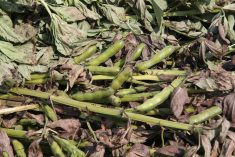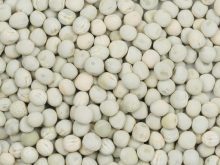Saskatchewan growers harvested a top-notch red and green lentil crop this year that will be easy to export
Growers harvested a highly marketable crop of red and green lentils this year, says a major processor.
Analyst Stat Communications has a preliminary breakdown of grades with 12 percent of the crop making No. 1 and 59 percent No. 2 in Saskatchewan where most of the crop is grown.
Moose Jaw based processor Simpson Seeds believes that is too low. It estimates 15 percent of the crop will make the top grade and 70 percent the second grade, with the remainder in the Extra 3 and No. 3 categories.
“If you’re comparing it to last year, it’s a very huge difference,” said Elyce Simpson, director of marketing and business development with Simpson Seeds.
Read Also

Critical growing season is ahead for soybeans
What the weather turns out to be in the United States is going to have a significant impact on Canadian producers’ prices
“We had maybe one or two percent of the crop was a No. 1 last year and only 15 percent maybe a No. 2.”
If the company is correct, the quality of the 2015 crop will be much higher the long-term average, with 85 percent in the No. 2 or better categories compared to the 10-year average of 74 percent.
Red and small green lentils are in slightly better condition than large greens because they were seeded and harvested earlier. Simpson estimates 70 percent of this year’s crop is red lentils.
It has been a few years since Canada had a top-notch lentil crop to sell. There is low damage, good colour and few bleached and wrinkled seeds.
Working with quality product makes it easier for splitters to do their job. In the last couple of years, lentil quality deteriorated during the final growth period in late summer and early fall because of a weather pattern of sporadic rainfall interspersed with dry spells.
That rain-dry-repeat pattern results in a lentil crop that creates headaches for processors.
“The seed coat just kind of glues to the seed and just makes it a little more difficult to remove,” said Simpson.
This year’s crop will be easier to split, but it will also be easier to export because the seeds won’t break or lose their coats during transport to overseas markets.
“It just helps in terms of ease of shipment and your buyer on the other end receiving a sound quality.”
Simpson said the quality upgrade won’t open up new markets, but it should help ease customer concerns about high green and red lentil prices.
Customers felt prices would be falling because of Agriculture Canada’s forecast of a 2.08 million tonne lentil crop, the second biggest on record.
Simpson feels it could actually be 100,000 to 200,000 tonnes larger than that.
“The fact remains that there was a huge shortage to fill, and while there was a good supply, we will likely export the majority of this crop this year,” she said.
Farmer deliveries have been brisk, and so have exports.
“For the most part, it’s moving quite smoothly,” said Simpson.
Contact sean.pratt@producer.com


















